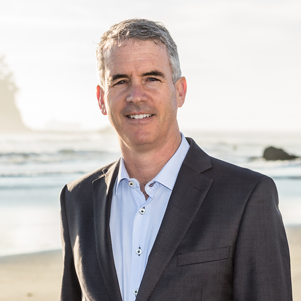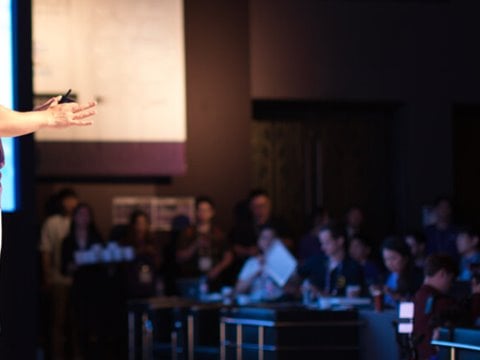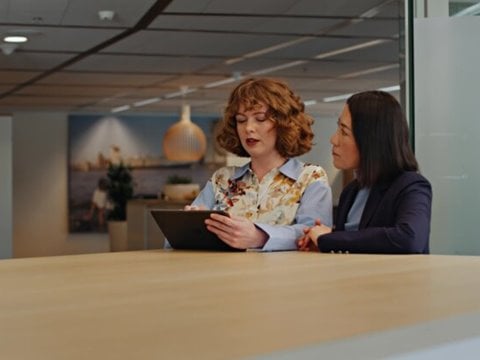
Kalmar and the Port of Tauranga – a relationship that straddles two decades
The Port of Tauranga, New Zealand’s largest container terminal and premier freight gateway, has been a loyal Kalmar customer for over 20 years. The port’s equipment fleet features over 40 Kalmar straddle carriers and recently welcomed a new set of Kalmar hybrid straddle carriers. These machines and other eco-efficient innovations from Kalmar have an important role to play in helping the port to meet its tough carbon-reduction targets and fulfil its ambitious growth plans.
 Located on New Zealand's North Island, the Port of Tauranga boasts significant land holdings and unrivalled sea, road and rail connections. The port's key strength lies in its ability to adapt to meet customer requirements and market demands, particularly the trend towards ever-larger container vessels. The port has invested significant capital in recent years in order to be capable of receiving these larger vessels.
Located on New Zealand's North Island, the Port of Tauranga boasts significant land holdings and unrivalled sea, road and rail connections. The port's key strength lies in its ability to adapt to meet customer requirements and market demands, particularly the trend towards ever-larger container vessels. The port has invested significant capital in recent years in order to be capable of receiving these larger vessels.
“Our operation is divided into two main parts: a container terminal and a bulk terminal. In terms of volume we handle around 24 million tons of cargo and 1.2 million TEU a year at the port,” says Dan Kneebone, Property & Infrastructure Manager at the Port of Tauranga. “Our strategy and investments are focused on developing the port as a major hub, and we have ambitious growth plans to help us achieve this goal.”
The Port of Tauranga is firmly committed to reducing its carbon footprint and has set clear targets to this end: “We aim to be carbon-zero by 2050 and to reduce our emissions by 5% per year relative to cargo volumes. We not only need to be prepared to comply with increasingly strict regulations, but we also want to demonstrate our genuine commitment to being a socially responsible operator in our community, particularly because we are located close to a large residential zone.”
Kalmar at the core of the equipment fleet
Kalmar equipment features heavily in the fleet at Tauranga, with the port operating 43 Kalmar straddle carriers of various ages, the majority of which are diesel-electric models, alongside three Kalmar reachstackers and nine Kalmar terminal tractors. Jeff Smith is the Straddle Workshop Manager for marshalling services provider Quality Marshalling: “We purchased our first Kalmar straddle carriers back in 2000, so we have a long history together, and those original machines are still fully functional after 21 years.” 
“The performance of our Kalmar machines has always exceeded our expectations and we have been extremely satisfied with the level of support that we get from the Kalmar team, especially from the product support representatives in Australia,” Jeff highlights.
Entering the hybrid era
In 2020 the port took delivery of four new Kalmar diesel-electric straddle carriers and threeKalmar hybrid straddle carriers, the latter of which have been operating for 15 months. The new hybrid machines are a clear demonstration of the port’s commitment to decarbonisation, which touches every aspect of its operations. “Our equipment fleet has a huge role to play in cutting our carbon emissions,” Dan highlights.
 Jeff goes on to emphasise his satisfaction with the excellent reliability and build quality of the latest batch of machines delivered by Kalmar in 2020: “The machines have been very reliable and we’ve had minimal downtime. Although bringing the hybrid straddle carriers online hasn’t changed our operations as such, we can see a clear preference from our operators for those machines based on the running hours. We’ve also had great feedback about how quiet they are and how smooth and comfortable they are to operate on a daily basis.
Jeff goes on to emphasise his satisfaction with the excellent reliability and build quality of the latest batch of machines delivered by Kalmar in 2020: “The machines have been very reliable and we’ve had minimal downtime. Although bringing the hybrid straddle carriers online hasn’t changed our operations as such, we can see a clear preference from our operators for those machines based on the running hours. We’ve also had great feedback about how quiet they are and how smooth and comfortable they are to operate on a daily basis.
The straddle carriers at Tauranga are operating almost around the clock. Some of its newer-generation Kalmar straddle carriers are clocking up over 6,500 running hours a year, and in its first 12 months of operation one of our new Kalmar hybrid straddle carriers achieved over 7,500 operating hours, which is an average of 21.5 hours a day.
“Based on our satisfaction with the performance of the hybrid straddle carriers over the last 15 months, and given our firm commitment to cut carbon emissions, we will certainly be considering hybrids when making future investment decisions regarding our equipment fleet,” Dan says. “Looking further ahead, going fully electric may also be an option once we are confident that the technology has proven itself in the field.”
Automation on the horizon
As a fast-growing terminal with ambitious plans for the future, the Port of Tauranga is naturally exploring all the options available to help it achieve its business goals, one of which is the adoption of automation technologies. “For example, we are looking at introducing automatic stacking cranes to the terminal to allow us to grow within our existing footprint,” Dan explains. “For us it's about intensification; we could stack six rather than three containers high within our footprint, so automation is definitely an avenue we are keen to explore further to help us do more within the space we have available.”
Moving forward together
The Covid restrictions in place in New Zealand naturally had some operational implications for the port. These included social distancing, separating work shifts and minimising common work areas.
“The Covid pandemic obviously presented challenges for everyone, but it has also driven some positive changes like enhanced cleaning procedures for workshop areas and equipment cabins, which have significantly improved hygiene in our operations,” Dan says.
“In terms of the quality of support we have received from Kalmar, the pandemic has not affected this at all. Any issues we have had have been dealt with swiftly, regardless of the restrictions we have all been facing. Like in any long-term relationship, we have had to deal with some bumps in the road, but the maturity of our partnership means we have been able to work through these issues together. We are looking forward to continuing to build on our successful collaboration in the future.”

Related articles
Further reading
Subscribe and receive updates in your email
Subscribe













